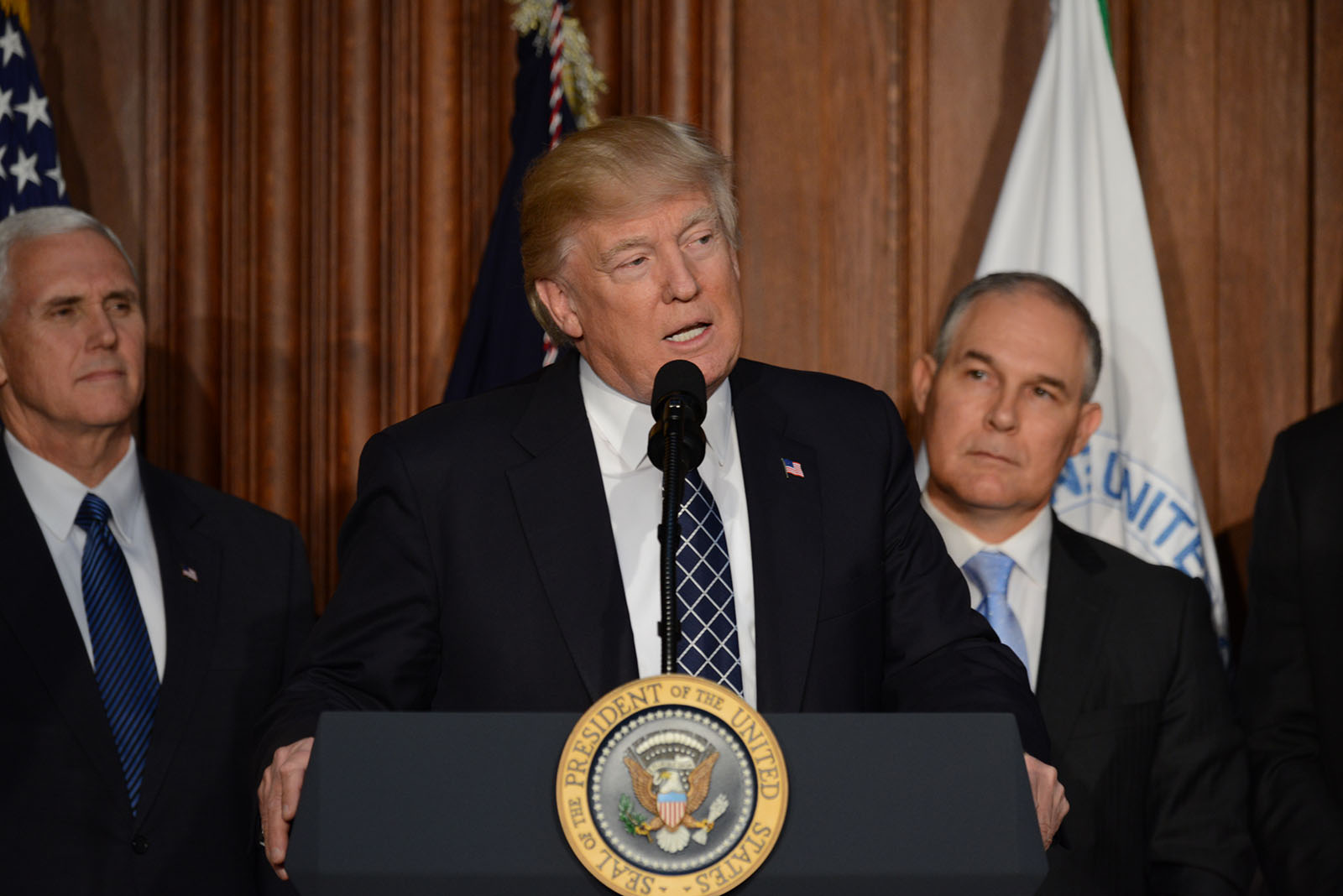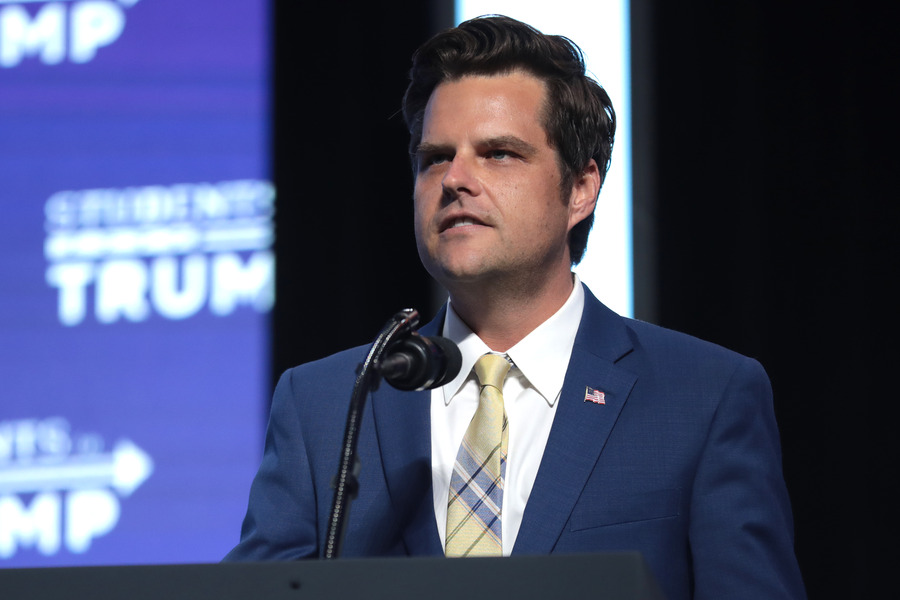Travel Ban 3.0: The Hawaii TRO Is Right on the Statute
EDITOR'S NOTE: This piece was updated Tuesday with a short comment on Judge Theodore Chuang's order.

Published by The Lawfare Institute
in Cooperation With

EDITOR'S NOTE: This piece was updated Tuesday with a short comment on Judge Theodore Chuang's order.
On Tuesday, Judge Derrick Watson of the federal district court in Hawaii issued a temporary restraining order (TRO) against President Donald Trump’s third executive order (which Watson referred to as “EO-3”) limiting entry of noncitizens into the United States. Watson held that EO-3 exceeded the president’s authority under the Immigration and Nationality Act (INA). That judgment is amply supported by the INA’s text, structure, and purpose.
In contrast to the earlier orders, EO-3 does not expire, although it is subject to review every 180 days. EO-3 also revised the mix of listed countries and the categories of affected foreign nationals. It suspended entry of immigrants and some or all classes of nonimmigrants from Chad, Iran, Libya, North Korea, Syria, and Yemen—dropping Sudan from the list. In addition, EO-3 bars the entry of immigrants from Somalia, subjects Iraqi nationals to heightened screening, and bars entry on nonimmigrant visas of certain Venezuelan government officials and their families. Justifying these restrictions, EO-3 cited concerns about the listed countries’ identity-document management, information-sharing, and cooperation on immigration and counterterrorism. In a peculiar twist that Judge Watson noted, EO-3 permits the entry of refugees and of most students—thus, targeting immigrant visa applicants who often have close relatives among U.S. citizens and lawful permanent residents (LPRs).
Since issuing the original EO in January 2017, Trump has claimed that his power to limit entry of foreign nationals stems from one provision of the INA: 8 U.S.C. § 1182(f) (the “entry provision”). It authorizes the president to “suspend the entry of all aliens or any class of aliens” when that entry is “detrimental to the interests of the United States.” However, as Watson points out, the entry provision does not give the president “unbridled discretion.” According to Watson, § 1182(f)’s condition that the president “find” that the entry of foreign nationals would be “detrimental to the interests of the United States” requires a concrete showing of dangerousness. Watson held that EO-3’s findings were too muddled to pass muster. Comparing ends to means, he found that EO-3 was “simultaneously overbroad and underinclusive.”
Reinforcing this finding, Watson noted that EO-3 inexplicably covers countries that in pertinent respects address the administration’s concerns about identity management, information-sharing, and cooperation. Moreover, EO-3 inexplicably fails to cover countries that have done little or nothing to address U.S. concerns. This part of Watson’s opinion is consistent with the superb analysis offered by the Cato Institute’s David Bier. As Bier noted, several countries on the EO-3 list use identity-management protocols of the kind that EO-3 approves. For example, four of the listed countries—Iran, Libya, Somalia, and Venezuela—issue electronic passports. Moreover, Interpol reported in 2014 that Iran was “very strong” in its efforts to share information on lost or stolen passports. For their parts, Libya, Somalia, Syria, and Venezuela all share substantial information. Almost 100 countries—including scores of states not on the list—did not issue electronic passports, and many others permitted their nationals to use old paper passports still in their possession. Moreover, over 150 countries—almost none of which were on EO-3 list—rarely or never report lost or stolen passports to international authorities.
In addition, EO-3 fails to show a rational connection between its restrictions and concrete dangers to national security. As Watson noted on Pages 27-28 n. 15 of his order, one draft study by the Department of Homeland Security found that over half of terrorist offenses in the U.S. were committed by native-born citizens, while only a small fraction were committed by countries listed in the earlier EOs—or EO-3, for that matter. Moreover, EO-3 provides no risk-based rationale for failing to cover most students for the listed countries. While students, in theory, might wish to avoid committing terrorist offenses because they value completion of their course of study, a similar analysis would indicate that immigrants who are subject to the EO would be law-abiding because they wish to preserve their relationships with U.S. citizen and LPR relatives. EO-3 never explains its coverage of one group and failure to cover the other. For Watson, these many flaws amounted to a holding that EO-3 exceeds the power delegated by Congress to immigration officials.
Buttressing Watson’s conclusion, § 1182(f) does not exist in a vacuum. Rather, it is part of a detailed, comprehensive statute. In FDA v. Brown & Williamson, the Supreme Court observed that both the president and courts reviewing presidential actions should read each statute as a “harmonious whole.” As the Senate Judiciary Committee observed in its report on the landmark 1965 immigration amendments (see Jack Chin’s article here), in the issuance of immigrant visas, “[r]eunification of families is to be the foremost consideration.” Many of the 1965 amendments paved the way for bringing families together. By interfering indefinitely with family reunification, EO-3 clashes with the INA’s structure and purpose.
Watson highlighted another way in which EO-3 clashed with the landmark 1965 legislation. According to Watson, EO-3’s restrictions on immigrant visas from the listed countries constituted impermissible discrimination based on nationality, in violation of 8 U.S.C. § 1152(a)(1)(A). Because no rational reason explained the marked under- and overinclusiveness of EO-3’s limits, the court inferred that EO-3 was driven by discriminatory purpose.
Congress added § 1152(a)(1)(A) to the INA in 1965 to pivot from the stark national origin quotas that had dominated immigration law for forty years. According to the Senate Judiciary Committee report noted above, the quota system lacked the “required degree of flexibility” to “permit the reuniting of families.” In decisively rejecting national origin quotas, the 1965 immigration amendments sought to ensure that discriminatory purpose had no place in the issuance of immigrant visas. As an indefinite bar to the entry of nationals of certain countries, EO-3 would return the U.S. to that dark pre-1965 period.
Judge Watson wisely recognized that the 1965 immigration amendments sought to consign national origin discrimination to the dustbin of history. Appellate courts should follow his lead.
Judge Theodore Chuang of the U.S. District Court in Maryland issued a nationwide TRO of EO-3. Chuang, unlike Watson, made his decision on both statutory and constitutional grounds. According to Chuang, the provisions of EO-3 affecting immigrant visas were barred by the INA. However, Chuang found that the INA permitted the president to restrict entry of nonimmigrants. To address that issue, Chuang turned to the establishment clause, finding that these restrictions failed to pass muster. As Josh Blackman has explained, the establishment clause is an overly blunt instrument to address the complex foreign policy questions present in immigration cases. The better view is that the INA, viewed as a “harmonious whole,” bars the indefinite immigrant and nonimmigrant restrictions in EO-3.


.jpg?sfvrsn=d5e57b75_5)

